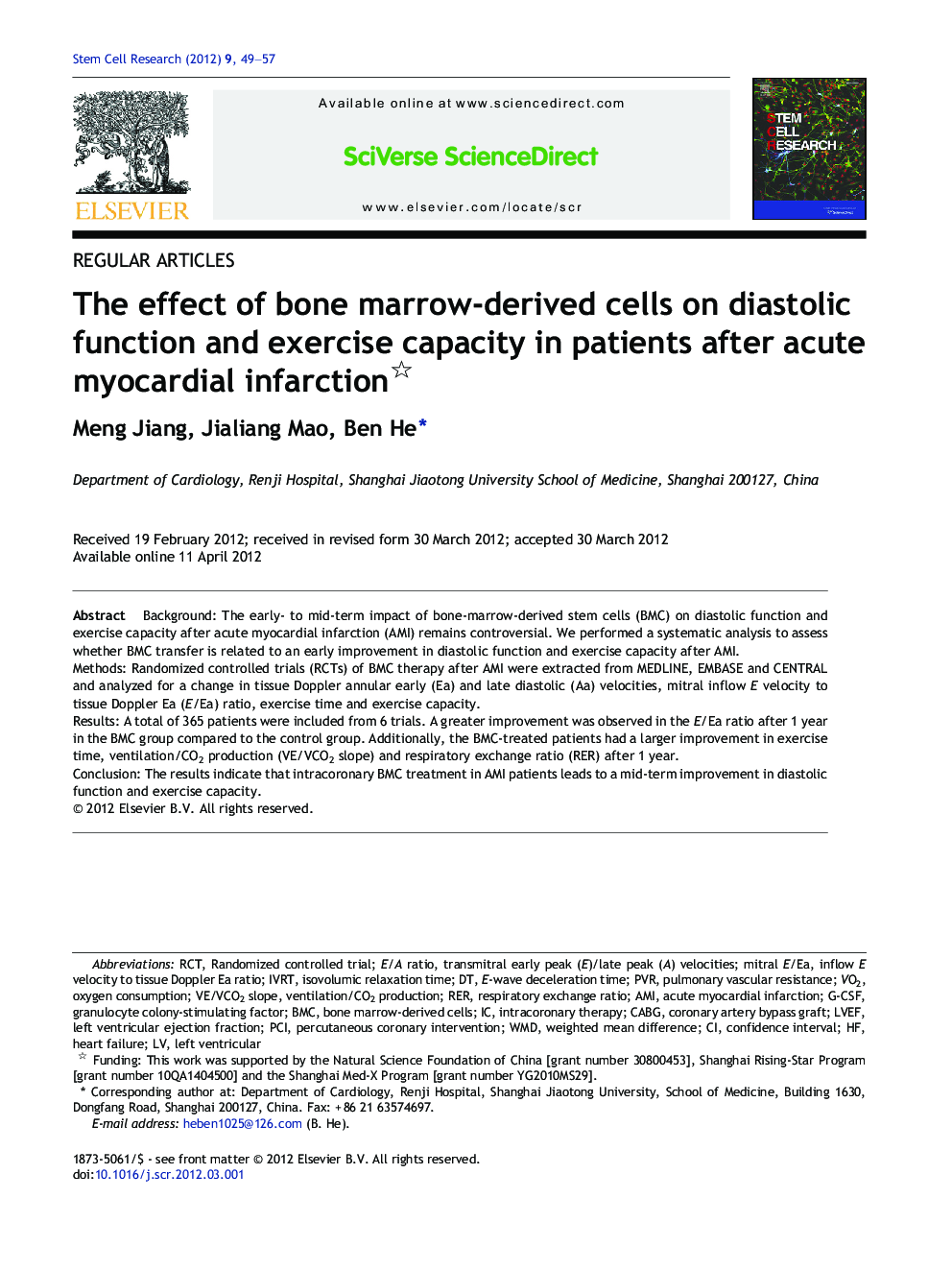| Article ID | Journal | Published Year | Pages | File Type |
|---|---|---|---|---|
| 2094407 | Stem Cell Research | 2012 | 9 Pages |
BackgroundThe early- to mid-term impact of bone-marrow-derived stem cells (BMC) on diastolic function and exercise capacity after acute myocardial infarction (AMI) remains controversial. We performed a systematic analysis to assess whether BMC transfer is related to an early improvement in diastolic function and exercise capacity after AMI.MethodsRandomized controlled trials (RCTs) of BMC therapy after AMI were extracted from MEDLINE, EMBASE and CENTRAL and analyzed for a change in tissue Doppler annular early (Ea) and late diastolic (Aa) velocities, mitral inflow E velocity to tissue Doppler Ea (E/Ea) ratio, exercise time and exercise capacity.ResultsA total of 365 patients were included from 6 trials. A greater improvement was observed in the E/Ea ratio after 1 year in the BMC group compared to the control group. Additionally, the BMC-treated patients had a larger improvement in exercise time, ventilation/CO2 production (VE/VCO2 slope) and respiratory exchange ratio (RER) after 1 year.ConclusionThe results indicate that intracoronary BMC treatment in AMI patients leads to a mid-term improvement in diastolic function and exercise capacity.
► Assess whether BMC transfer improves diastolic function after AMI. ► Assess whether BMC transfer improves exercise capacity after AMI. ► The E/Ea ratio, exercise time, VE/VCO2 slope and RER were improved. ► The results may also yield clinical significance.
